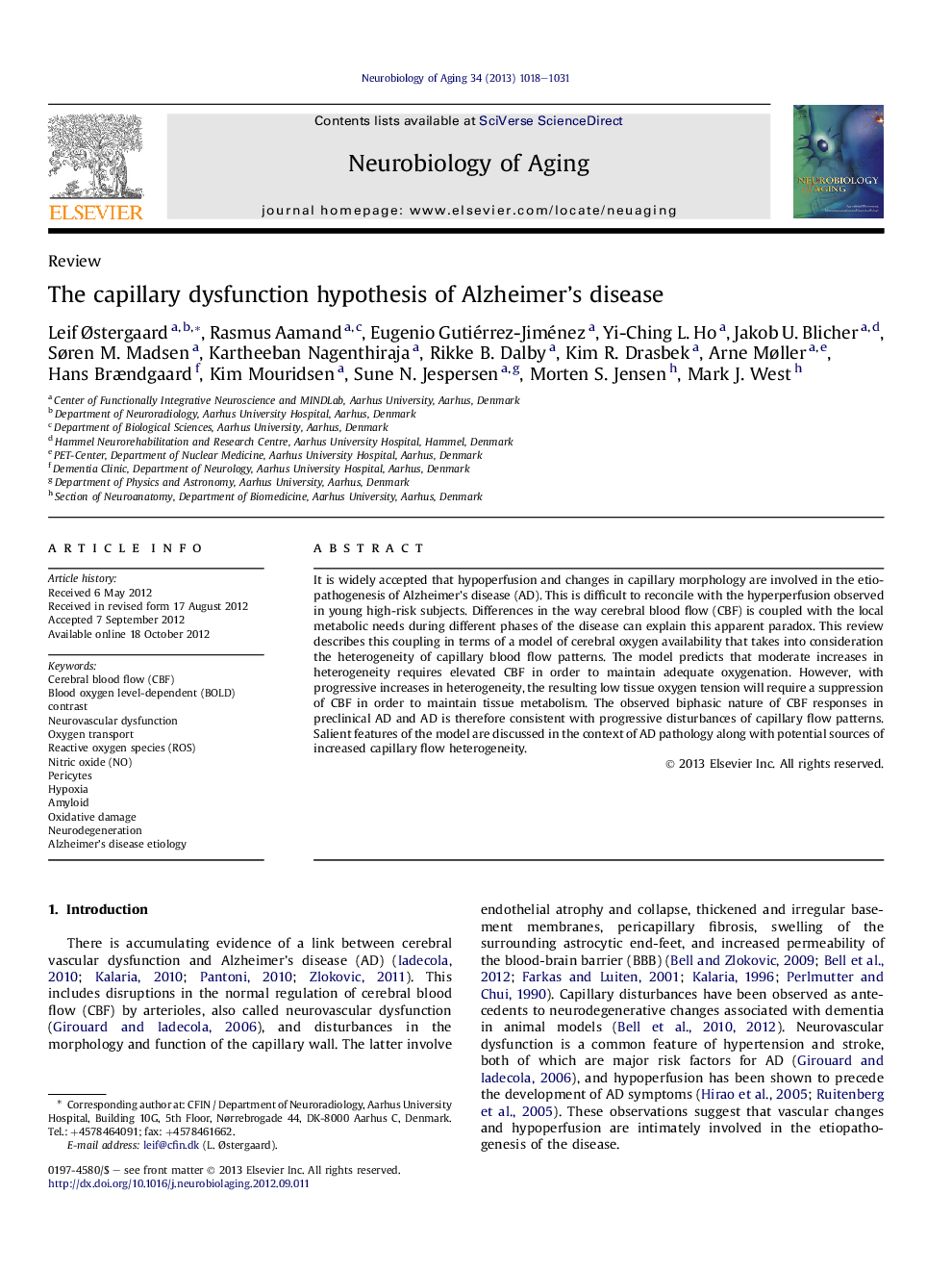| Article ID | Journal | Published Year | Pages | File Type |
|---|---|---|---|---|
| 6807495 | Neurobiology of Aging | 2013 | 14 Pages |
Abstract
It is widely accepted that hypoperfusion and changes in capillary morphology are involved in the etiopathogenesis of Alzheimer's disease (AD). This is difficult to reconcile with the hyperperfusion observed in young high-risk subjects. Differences in the way cerebral blood flow (CBF) is coupled with the local metabolic needs during different phases of the disease can explain this apparent paradox. This review describes this coupling in terms of a model of cerebral oxygen availability that takes into consideration the heterogeneity of capillary blood flow patterns. The model predicts that moderate increases in heterogeneity requires elevated CBF in order to maintain adequate oxygenation. However, with progressive increases in heterogeneity, the resulting low tissue oxygen tension will require a suppression of CBF in order to maintain tissue metabolism. The observed biphasic nature of CBF responses in preclinical AD and AD is therefore consistent with progressive disturbances of capillary flow patterns. Salient features of the model are discussed in the context of AD pathology along with potential sources of increased capillary flow heterogeneity.
Keywords
Related Topics
Life Sciences
Biochemistry, Genetics and Molecular Biology
Ageing
Authors
Leif Ãstergaard, Rasmus Aamand, Eugenio Gutiérrez-Jiménez, Yi-Ching L. Ho, Jakob U. Blicher, Søren M. Madsen, Kartheeban Nagenthiraja, Rikke B. Dalby, Kim R. Drasbek, Arne Møller, Hans Brændgaard, Kim Mouridsen, Sune N. Jespersen, Morten S. Jensen,
